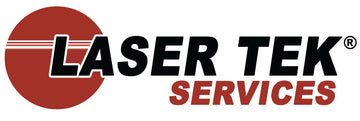The quality of toner supplied with laser toner cartridges does not always guarantee the turn out of remarkable laser printouts. Print quality is dependent on the capability of imaging components to work in tandem to deliver expected results, particularly the sweeping action of the wiper blade over the surface of the Organic Photo Conductor or OPC Drum.
Failure of the component to properly clean the OPC drum will leave residual toner powder on the latter's surface that will set off print irregularities. A single print cycle covers only a fraction of a second for laser printers with a rated speed of 50 pages per minute or PPM. Imagine what this component goes through just to clean the OPC Drum of excess toner.
Component Function. During printing, laser toner cartridges deliver toner powder in controlled doses from the toner hopper and into the OPC Drum. Following each cycle, thorough cleaning must be executed in preparation for the succeeding print sequence. This mechanical process prevents the manifest of unwarranted print defects such as back grounding or getting a residual image from the previous page on the subsequent printout. Back-grounding is not a question of toner quality but of the wiper blades efficiency to wipe out residual toner from the OPC drum after every print cycle.
Troubleshooting your laser printer? We might just have the printer maintenance tips you need. Visit Recycle. Refill. Save! today.
Component Construction. Under a standard cartridge design, the wiper blade is attached to the OPC Drum laterally. The component may be stationary but it creates friction against the drums surface as the OPC Drum rotates at high speed. Nonetheless, only a sufficient amount of pressure that corresponds to necessary function is applied on the drums surface to rid it of excess toner after every print cycle. Undue pressure can speed up the deterioration of the sensitive drums surface which would consequently affect the tolerances required to prevent print defects.
Since the drums surface is usually rigid (being more expensive), the wiper blade must be constructed from a less rigid material in order to prevent the excessive wear on the drums surface. And to achieve required design alignment, the component was designed with a metal bracket and a polymer strip. Removal of toner residues from the drums surface is performed by the polymer strip which is typically manufactured from polyurethane from the family of plastics.
Component Damage and Replacement. Damage to the polymer strip is not visible to the naked eye, so replacement becomes necessary once print defects start to manifest over the printouts. So, if the OPC Drum is rated at 60,000 printed pages, expect the wiper blade to be replaced after every 10,000 printed pages.
Is the OPC drum of your laser printer worn out? Shop for a compatible replacement now at http://www.lasertekservices.com and enjoy big savings.
Replacement is often necessary following the refill of toner cartridges using toner refill kits. This practice extends the print capacity of the laser toner cartridge, particularly the OPC Drum (in a toner cartridge OPC Drum combo) that outlives toner supply over 10 times. The user generates savings in the process and likewise upholds an eco-friendly practice as the refill of toner cartridges delays its eventual trip to garbage heaps or recycling facilities.
Always have a supply of wiper blades ready so replacement can be promptly instigated once print defects over printouts begin to manifest.





